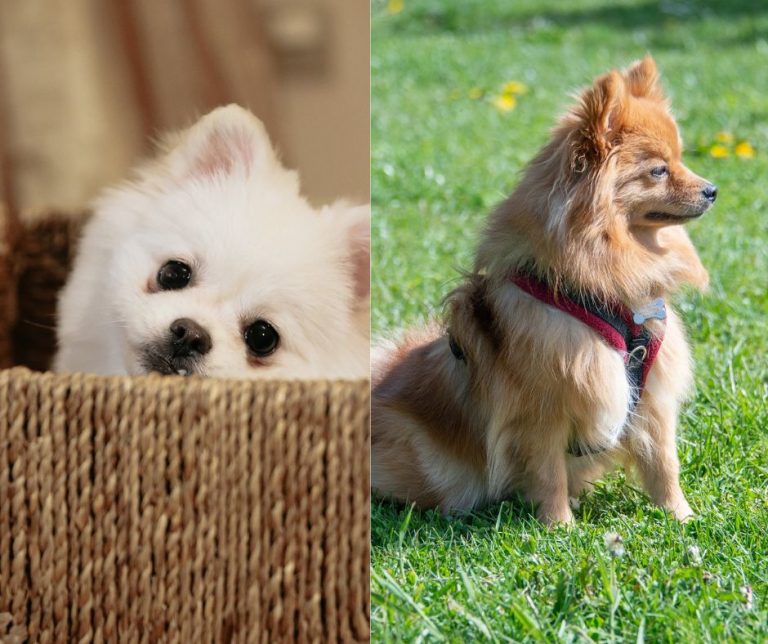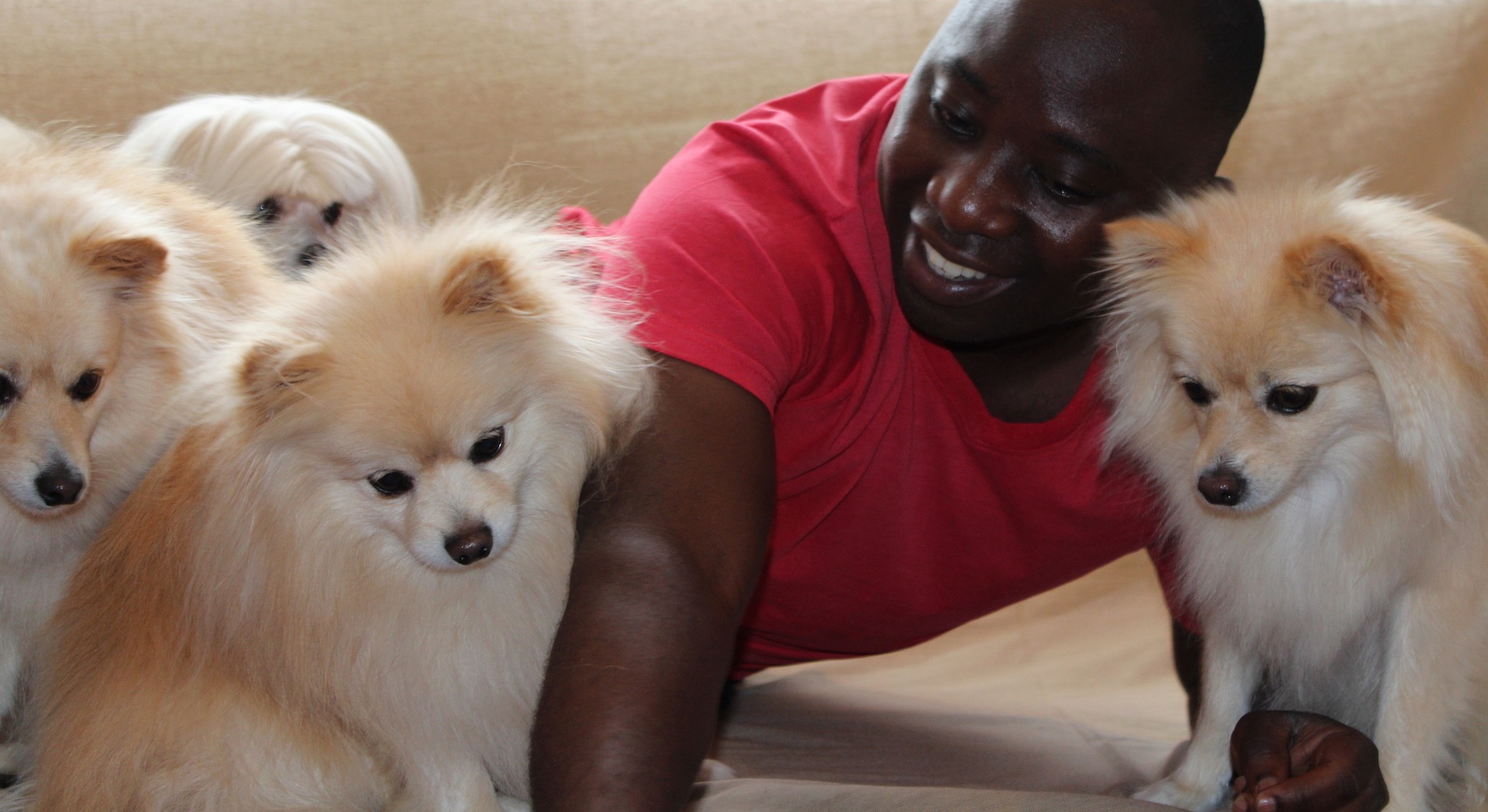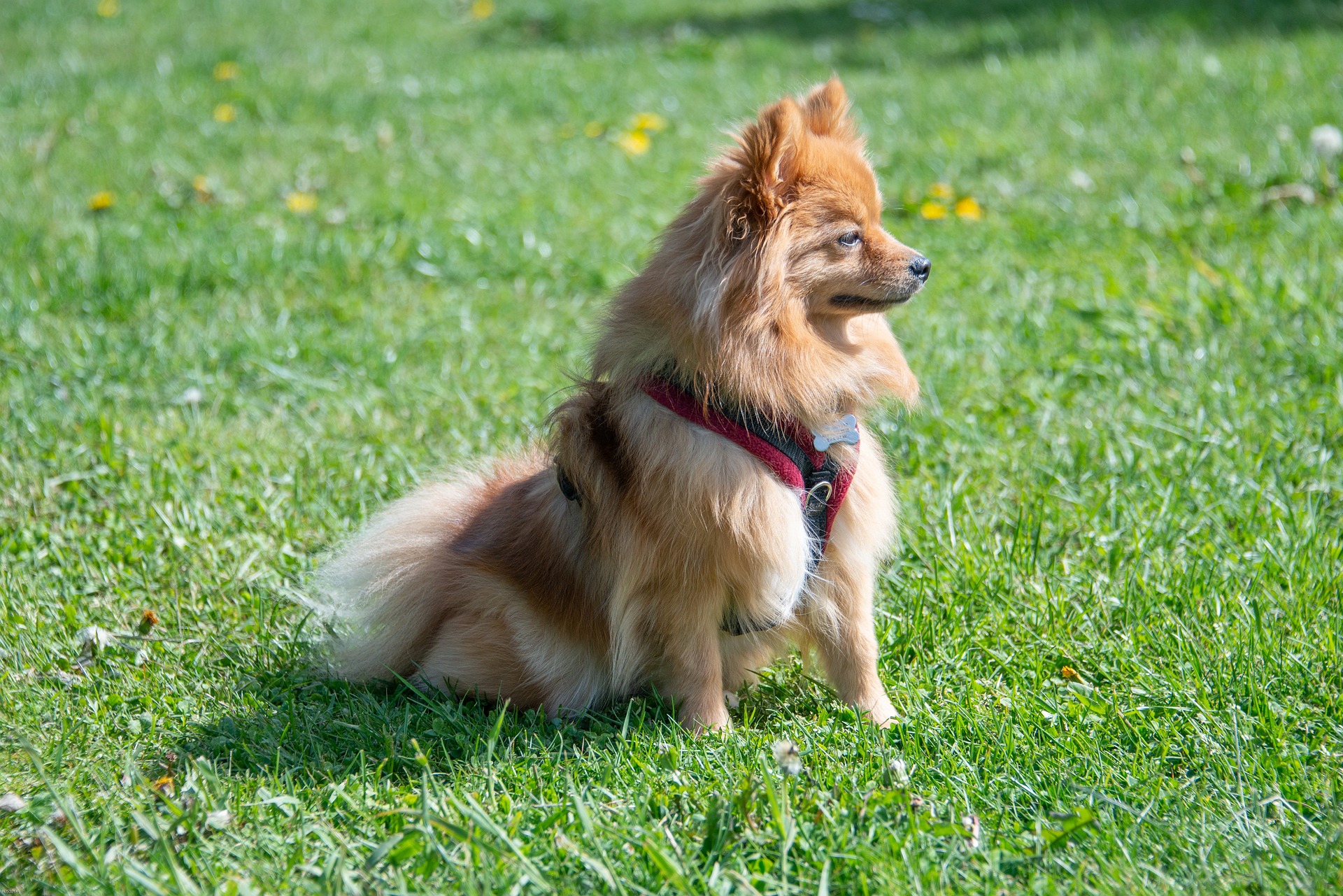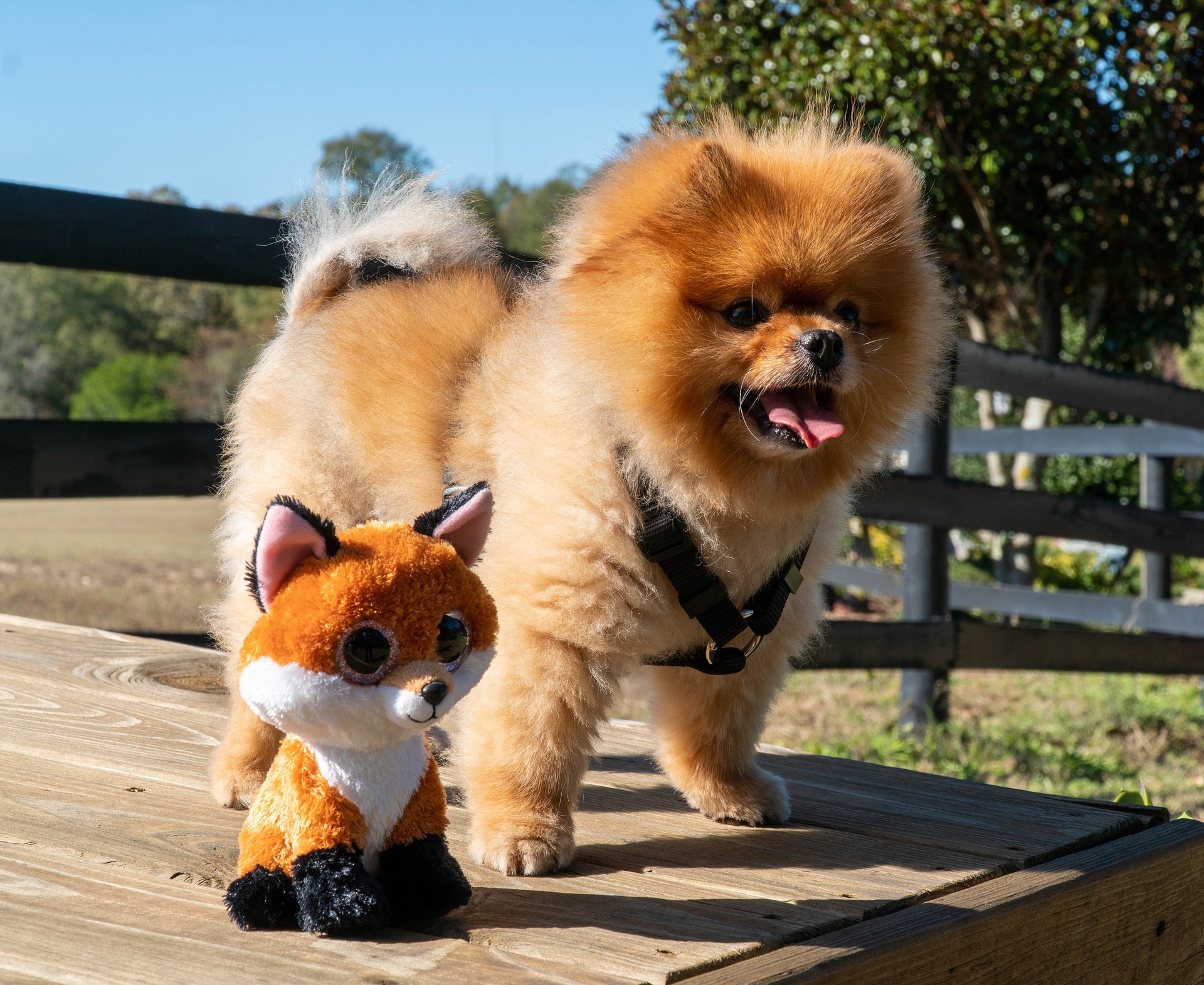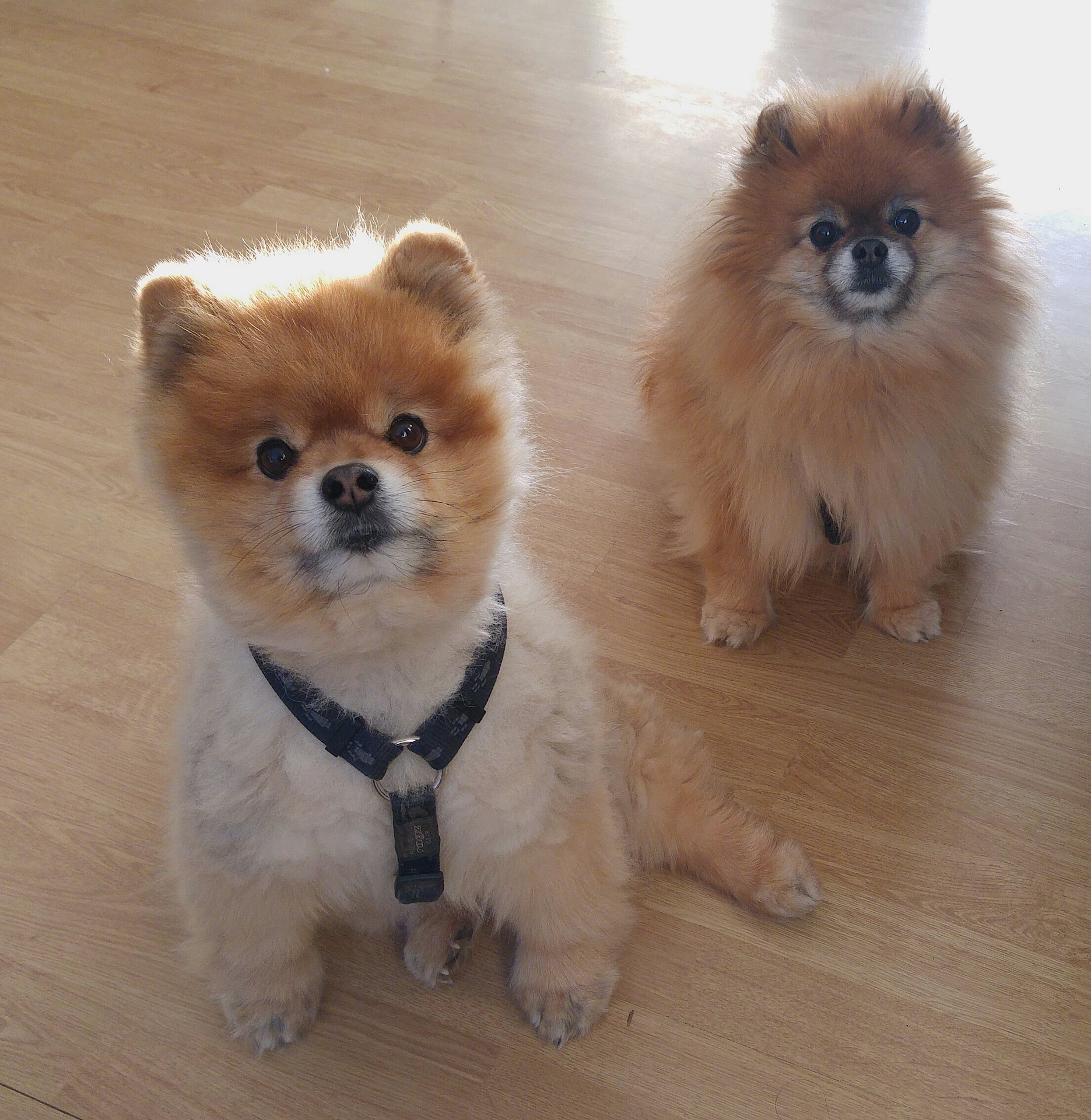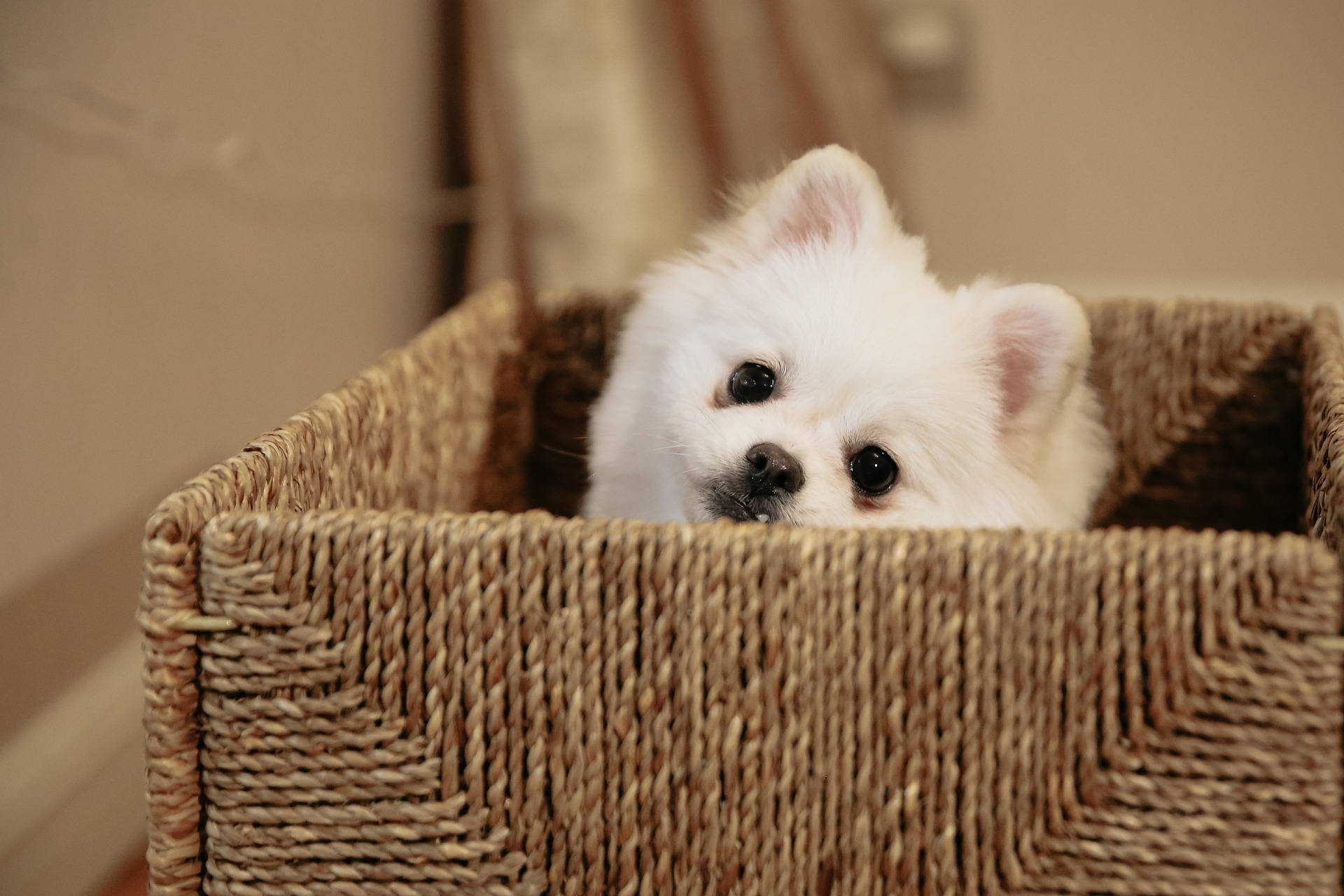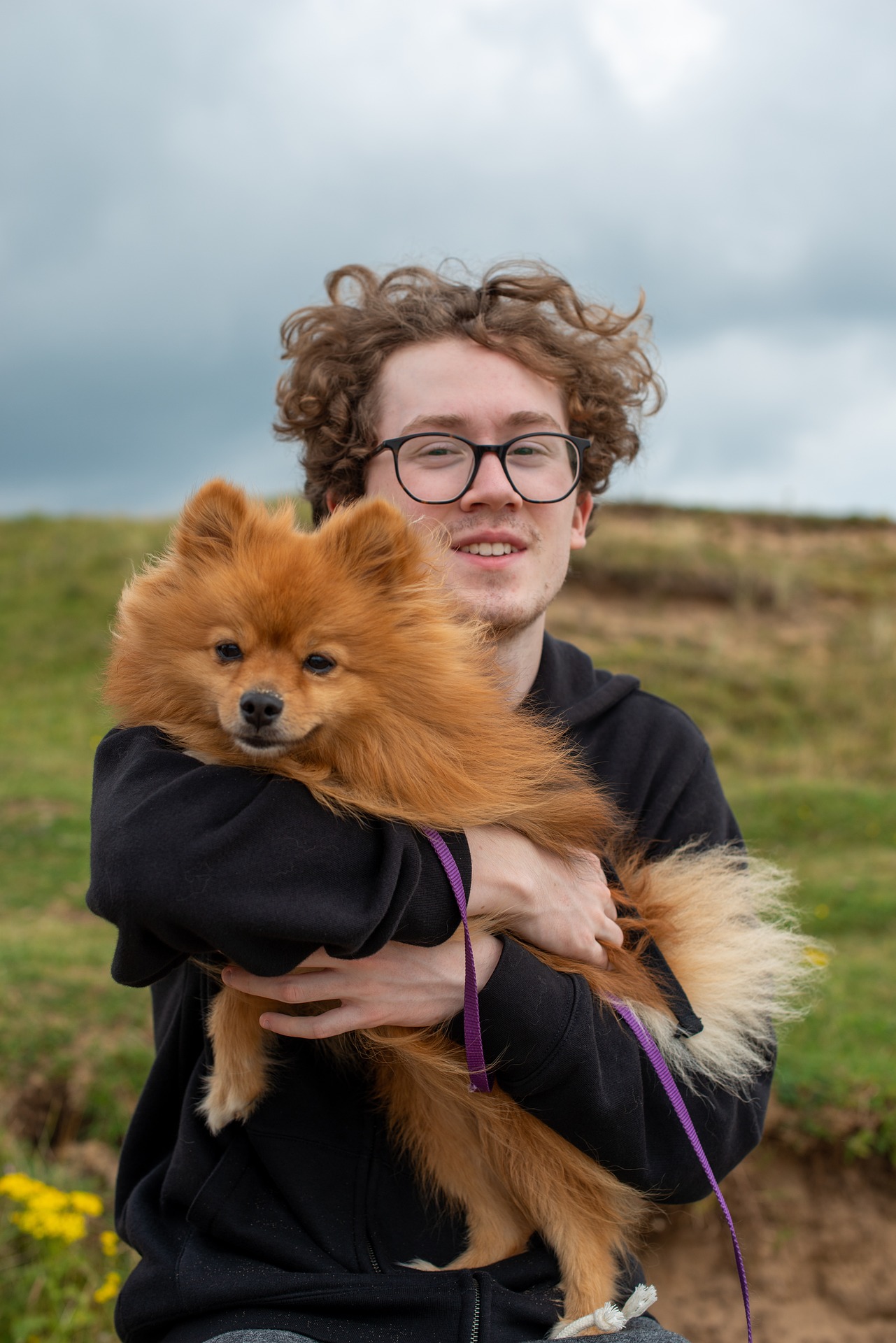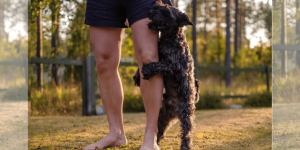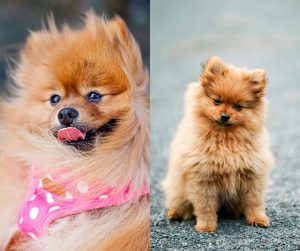The Teacup Pomeranian and the standard Pomeranian share a common lineage, but they are quite distinct in terms of size and sometimes their care needs.
While the ubiquitous Pomeranian is a popular breed recognized for its small size and fluffy coat, the Teacup variety pushes the boundaries of miniature pet parenthood.
These petite pups are sought after for their even smaller stature, making them a trendy choice among those looking for a compact canine companion.
Understanding the differences between these two types of Pomeranians goes beyond just their size.
From exercise requirements to potential health issues, it’s vital for prospective owners to recognize the care nuances that ensure these dogs lead happy, healthy lives.
Despite their size, both breeds share a vivacious and playful nature, indicative of their spirited Pomeranian roots.
By recognizing these contrasts and similarities, owners can better appreciate the unique attributes of these charming breeds. Let’s take a look at the Teacup Pomeranian vs Pomeranian dog breed comparison.
Key Takeaways
- Teacup and standard Pomeranians differ in size, but both require proper care
- A Pomeranian’s health and lifespan can be influenced by its size variation
- Cost and considerations of ownership vary between Pomeranian breeds
Origin and History
When one looks at the fluffy little Pomeranian, it’s hard to imagine that this toy-sized pooch has a history intertwined with the Arctic and royalty.
But hold onto your hats, because the story of how this breed came to win over our hearts is as rich and fascinating as a royal drama.
Ancestral Lineage
The Pomeranian’s story begins way up north. These pups are descended from the ancient Spitz breeds that hailed from the Arctic regions.
These larger, hardy dogs were workhorses of the cold, used for pulling sleds and herding animals. With time, they made their way across Europe.
Specifically, the ancestors of what we now call Pomeranians settled in Germany and Poland, in a region then known as Pomerania. They share the same ancestry as the German Spitz. In fact, many people mistake the Pomeranian puppy for a German Spitz.
Breed Development
So how did they go from sled-pulling to lap-sitting companions?
The shift started when Pomeranians caught the eye of European nobility. But it was Queen Charlotte who first brought these dogs into England, where they were known as “wolf dogs” and were mainly white.
However, they gained the limelight under Queen Victoria, whose affection for a smaller red Pomeranian named Marco led breeders to miniaturize the breed.
Through selective breeding, the once larger Spitz was refined to the small, vivacious companion known worldwide today.
It’s a touch of serendipity how a dog from such rugged beginnings has turned into the pint-sized charmer that is content to be the jewel of any family’s eye.
They carry with them a rich history—from the icy terrains of the Arctic to the warm laps of queens.
We have to note that while the Teacup Pomeranian, or the Miniature Pomeranian is a thing between breeders, this tiny dog is not recognized by the American Kennel Club. The AKC doesn’t make a distinction between a Teacup Pom, Standard Pomeranian, or Mini Pomeranian puppy. All the American Kennnel Club does is set breed standard. You cannot register your Teacup Pom as a separate breed.
Physical Characteristics
When talking about Teacup Pomeranian vs Pomeranian dog breed, one can easily spot the differences simply by looking at their size, coat, and colors. They’re each charming in their own way, with the Teacup Pomeranian capturing hearts with its tiny stature and the Standard Pomeranian impressing with its fluffier and fuller size.
Let’s get into the nitty-gritty of how these adorable dogs compare physically.
Size Comparison
| Feature | Teacup Pomeranian | Standard Pomeranian |
|---|---|---|
| Weight | Typically between 2 and 3 lbs | Usually between 3 and 7 lbs |
| Height | Under 6 inches tall | Around 6 to 7 inches tall |
Teacup Pomeranians are significantly smaller than their standard-sized counterparts. A Teacup Pomeranian is not a separate breed; it’s simply a Pomeranian that is bred to be smaller, hence its “teacup” moniker.
Coat and Colors
Both Teacup and Standard Pomeranians boast a fluffy double coat, helping them to stay warm. Their fur comes in a variety of colors, with red, tan, black, white, and orange being common shades for both sizes.
Regardless of size, their coats require regular grooming to maintain their striking appearance.
Visual Differences
At first glance, their appearance strikes you: Teacup Pomeranians are tiny dogs, almost like permanent puppies, igniting an immediate “aww” from onlookers.
Standard Pomeranians also have that “forever young” look but are noticeably larger with a more robust frame. They both share bright, alert expressions that endear them to anyone they meet.
Personality and Behavior
When picking a furry companion, their personality and behavior are just as important as their size. Let’s get to know the Teacup and standard Pomeranian a bit better!
Temperament
Teacup Pomeranians share a lot of the same qualities as their slightly bigger relatives. They possess a charming personality that’s both sweet and feisty at times.
Despite their petite frame, don’t be fooled—these little dogs have the heart of a much larger pooch.
They’re known to be quite playful and energetic, which can add a delightful spark to your daily life.
Pomeranians, in general, are intelligent and alert, which makes them excellent companions, but also a bit independent.
- Playfulness: Both are likely to show a playful attitude that brings joy to their owners
- Energy Levels: High energy is a common trait, requiring stimulation through play or short walks
- Matey: They are usually quite affectionate and loyalty shines through their interactions
Socialization Needs
These toy breeds thrive on companionship and often form a strong bond with their family.
Due to their size, Teacup Pomeranians might be extra sensitive when it comes to socializing, as they can be easily overwhelmed by larger dogs or very active environments.
Early and gentle socialization is crucial for these pet-friendly characters to help them become confident, sociable pets.
- Family-Friendly: Both varieties fit well into family life, showing affection freely
- Early Socialization: Key to helping them become well-adjusted to both humans and other pets
These dogs may be small, but their need for social interaction and affection is huge. They’ll keep you on your toes with their spirited demeanor while also gladly curling up in your lap after a day full of adventures.
Health and Lifespan
When deciding between a Teacup Pomeranian and a standard Pomeranian, potential owners should be aware that health and lifespan can be significant factors in their care.
These small dogs share many common health problems, but the Teacup variety might be more prone to certain issues due to their smaller size.
Regular vet check-ups and an understanding of their specific health needs are essential in contributing to a healthier, longer life.
Common Health Problems
Teacup Pomeranians and Pomeranians are both susceptible to a variety of health issues, many of which are related to their small size. Common concerns include:
- Hypoglycemia: Low blood sugar, which can lead to weakness and seizures
- Collapsing Trachea: A condition where the trachea, or windpipe, collapses easily, leading to breathing difficulties
- Heart Defects: Can be present at birth or develop over time, affecting a dog’s health and activity level
- Dental Issues: Due to their small mouths, they are prone to overcrowding of teeth and associated problems
Additionally, the grooming needs of Pomeranians, if neglected, can lead to skin problems. Owners should establish a consistent grooming routine.
Breeding practices are also a concern. Inbreeding can exacerbate health problems, so it’s important to choose a reputable breeder who understands the importance of healthy breeding practices.
Expected Lifespan
Lifespan for these breeds varies but is typically within a comparable range. A Pomeranian’s lifespan tends to be:
- Standard Pomeranian: Ranges from 12 to 16 years
- Teacup Pomeranian: Also ranges 12 to 16 years but may be shorter due to the increased risk of health problems
The lifespan of these dogs largely depends on their health care, genetic history, and daily care from their owners. Regular veterinary care is key to addressing health issues early and maintaining a Teacup Pomeranian or Pomeranian’s health. Because of its long lifespan, the Pomeranian breed is a popular choice for crossbreeding. One popular option is the Siberian Husky Mix, and of course, the Poodle mix. Poodles are also popular choice for crossbreeding because of their hypoallergenic coat.
Care and Maintenance
When welcoming a furry Pomeranian or a tiny Teacup Pomeranian into one’s home, it’s crucial to be mindful of their specific care and maintenance needs to ensure they thrive.
Grooming Essentials
Both Pomeranian and Teacup Pomeranian breeds boast a lush double coat that calls for regular grooming to keep it soft and healthy.
Frequent brushing—about two to three times a week—is vital to prevent matting and to manage shedding. These pups should be bathed every few weeks with a gentle dog shampoo to keep their coat vibrant.
- Brushing Frequency: 2-3 times per week
- Bathing Frequency: Every 3-4 weeks
- Shedding: Moderate to high
Diet and Nutrition
The dietary needs of Pomeranians and their Teacup counterparts should be taken seriously. They need quality dog food formulated for small breeds with high energy levels.
Teacup Pomeranians are particularly prone to hypoglycemia, so they may require more frequent, smaller meals to maintain stable blood sugar levels.
- Dog Food Type: High-quality, small breed formula
- Feeding Schedule:
- Pomeranian: 2 times per day
- Teacup Pomeranian: 3-4 smaller meals per day
- Food Quantity: Follow packaging instructions based on weight
Exercise Requirements
Despite their size, both breeds possess a playful spirit and an energetic demeanor.
A Pomeranian needs short walks twice a day and playtime to stay healthy.
Due to their fragility, Teacup Pomeranians can often have their exercise needs met with indoor play, but they also enjoy and benefit from brief, gentle walks.
- Pomeranian Walks: 2 times per day, 15 minutes each
- Teacup Pomeranian Exercise: Indoor play or short, gentle walks
- Playfulness: Highly playful; provide toys and engagement
Training and Intelligence
When it comes to dog training and intelligence, Pomeranians—regardless of size—pack a lot of smarts into their small statures. Be prepared for a responsive companion eager to learn, but remember, Poms can be bold and have a tendency to bark, which is something you’ll want to manage through training.
Trainability
Pomeranians are known for their alertness and intelligence, ranking at number 23 on the dog intelligence list. This makes them quite trainable.
They can learn a variety of tricks and commands, and with their eager-to-please attitude, they often excel in obedience training. However, their intelligence also means they can be a bit stubborn.
Consistency and positive reinforcement are key in their training regimen. It’s important to integrate:
- Routine: Keep sessions short and fun
- Reinforcement: Use treats and praises liberally to encourage good behavior
- Patience: Allow them to learn at their own pace; avoid harsh methods
Mental Stimulation
Both Teacup and Standard Pomeranians need mental stimulation to stay happy and prevent boredom. These dogs enjoy:
- Puzzle Toys: Keep their minds active and satisfy their curious nature
- Playtime: Interaction with their owners through fetch or tug-of-war can be mentally stimulating
- Training Sessions: Incorporate learning new tricks to keep their minds sharp
Mental exercises are just as crucial as physical ones. Because they tend to bark—a trait that often comes from their watchdog origins—it’s beneficial to work on quiet commands and barking only when necessary.
Guarding behavior can be managed by teaching them what is and isn’t a threat. Engaging their brains can help with managing these instincts.
Breeding and Ethical Concerns
When considering the adorable Pomeranian breed, prospective pet owners must be aware of the serious ethical issues surrounding the breeding of the much sought-after teacup varieties.
Breeding Practices
In their quest to produce exceptionally small Pomeranians, known as “teacup” Pomeranians, some breeders may engage in practices that raise ethical concerns.
Unfortunately, it’s not uncommon for breeders to select the smallest dogs from a litter, sometimes referred to as the “runts,” for breeding. This can be problematic as these dogs may carry genes for undesirable traits or health conditions, which can be passed on to their offspring.
Key aspects of questionable breeding practices include:
- Breeding runts or dogs with health issues, potentially leading to a lineage with increased health risks
- Inbreeding, which can result in a higher chance of genetic defects and other health issues
Choosing a Breeder
When seeking a Pomeranian, choosing a reputable breeder is crucial.
A reputable breeder conducts health screenings and breeds responsibly to maintain the health and standard of the breed.
Here’s what to look for in a breeder:
- Health checks: Breeders should offer documentation of health checks from a veterinarian
- Breeding ethics: A conscientious breeder will avoid unethical practices, such as inbreeding or purposefully breeding smaller-than-average dogs
- Openness: Ethical breeders are usually transparent about their breeding practices and are willing to answer any questions from potential owners
Cost and Ownership
When considering adding a fluffy companion to their lives, many prospective dog parents are curious about the costs associated with Teacup and standard Pomeranians.
Because of the selective breeding needed for a Teacup Pomeranian puppy, this dog is slightly more expensive.

